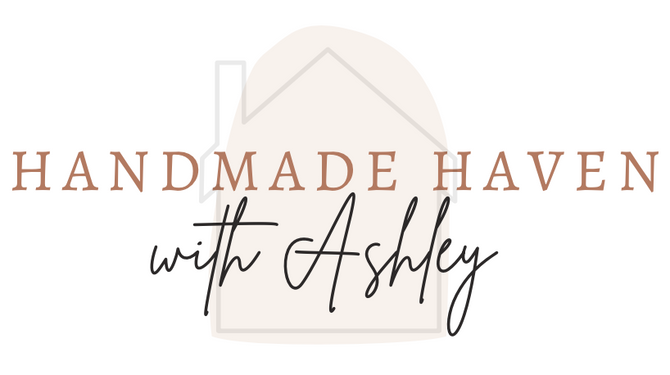Let's stroll together through the wallpaper installation process, with some handy tips and quirky tricks to keep things smooth sailing!
Wallpaper has easily become one of my favorite projects to tackle because it brings so much personality to a space. I've officially wallpapered all of the walls in my home and I'm always looking for an extra room where I can install some, but today I will be walking you though how to tackle your own wallpaper project!

Tools Needed to Install Wallpaper
- Laser Level
- Wallpaper Adhesive
- Paint Roller/ Paint Stick
- X-Acto/ Additional Blades
- Smoothing Tool/ Joint Knife
- Roll of Paper Towels
Step 1: Choose Your Wallpaper Design
Here are some things to consider when trying to find the right wallpaper for your project:
Consider the Room Type
-
High-moisture rooms (like bathrooms or kitchens): go for vinyl wallpaper, they’re more moisture resistant and easy to clean.
-
Living rooms, bedrooms, or offices: paper or fabric-backed wallpaper offers a more luxe texture and depth.
Think About Pattern Scale
-
Large patterns make a bold statement but can overwhelm small rooms; they shine on accent walls.
-
Small or subtle patterns work best in tighter spaces or if you want something more classic and less busy.

Mind the Lighting
-
Natural light brings out color and texture; darker wallpapers can make dim rooms feel smaller, while lighter tones open them up.
Order Samples First
-
Always order swatches or sample rolls before committing. Tape them on the wall and look at them at different times of day to see how they play with your lighting and decor.
Pattern Match & Repeat
-
Before buying, check the pattern repeat; that’s how often the design starts over. Larger repeats look beautiful but mean you’ll need more wallpaper to line up the design correctly (we’ll cover that below).
If you didn't know, I released my own wallpaper collection, with a bunch of fun and bold designs; so that is a great place to start if you're looking for a wallpaper design.

Here are a few other places with some great wallpaper designs:
- Spoonflower
- Copper corners
- Chasing paper
- Milton & King
- Drop It Modern
- Mitchell & Black
- Tempaper
- Astreetprints.com
- Carter and Main
- Graham & Brown
- Flavor Paper
- Roommates Decor
- Backdrop
- AllModern
- Jungalow
- Minted
- Flavor Paper
- Kate Zaremba
- Hovia
- Hygge & West
- Walnut Wallpaper
Step 2: Figure Out How Much Wallpaper You Need to Buy
1. Measure Your Walls
-
Measure the height and width of each wall you’re covering.
-
Multiply the two to get the square footage per wall.
-
Example: a wall that’s 8 ft high × 10 ft wide = 80 sq. ft.
-
-
Add up the square footage for all the walls you’ll cover.
2. Subtract Large Openings
-
Subtract the square footage of doors and big windows, but it’s usually smart to leave them in if you’re new to wallpapering (it gives you a small buffer).
3. Check the Wallpaper Roll Coverage
-
A standard single roll in the U.S. covers about 28 sq. ft. Some wallpapers are sold as double rolls, which cover around 56 sq. ft.
(Always check your specific wallpaper’s label for exact coverage.)
4. Account for Pattern Repeats
-
If your wallpaper has a pattern repeat, you’ll need extra paper to match the design across seams.
-
Add 10-15% extra to account for patterned wallpaper.
6. Always Round Up
-
Wallpaper dye lots can vary slightly, so it’s better to buy one extra roll from the same batch just in case you need to replace a strip later. There have been a number of times where I have ordered the same wallpaper in different batches and the colors are slightly off. It's better to buy extra than buy it in two separate lots.
Quick Tip:
If math isn’t your thing, many wallpaper brands and retailers have online calculators. Feel free to use this one if needed!
 Step 3: Prep Your Walls
Step 3: Prep Your Walls
Start with Smooth Walls Fill in holes, sand rough patches, and clean off dust or grease. A smooth, clean surface helps the wallpaper adhere evenly and prevents bumps.
I have personally installed wallpaper over a number of textured walls, but if your walls is very textured, it way be wise to skim coat first to get a smooth wall first.
If you're interested in Skim Coating, check out our video tutorial here.
Step 4: Set Up Your Laser Level
Never assume your wall or corner is perfectly straight, they rarely are! Use a Laser Level to Set Your First Line.
This is one of the most important steps. A laser level projects a perfectly straight vertical (plumb) line that you can use to align your first strip.
If your first strip goes up crooked, even by a little, every following strip will follow that same angle, and by the time you reach the other side of the wall, your pattern will look slanted.

Step 5: Apply Your Wallpaper Adhesive on the Walls
Before applying anything, check what kind of wallpaper you have:
-
Pre-pasted: The adhesive is already on the back, you’ll just need to activate it with water.
-
Unpasted (traditional): You’ll apply paste either to the back of the wallpaper or directly to the wall.
-
Peel-and-stick: No adhesive needed; skip this step.
Use the Right Paste
-
Use the adhesive recommended for your wallpaper type, vinyl wallpapers need a stronger paste than paper ones.
-
If in doubt, choose a clear, strippable adhesive (it’s easier to clean and remove later).
Apply Evenly
-
Use a paint roller or brush to spread the adhesive evenly on the wall (or the back of the paper if required).
-
Avoid thick globs; too much paste can cause bubbles or weak adhesion.
Mind Your Laser Line
-
Keep that laser line visible; it’s your guide for laying the first strip perfectly straight.
-
Only paste a section slightly wider than your strip so the line stays clear and doesn’t get covered in adhesive.
Let It Settle (If Needed)
-
If you’ve pasted the wallpaper itself, let it “book;" fold the pasted sides together (glue-to-glue) for about 5 minutes to let it absorb and relax before hanging.
Quick Clean-Up
-
Keep a damp sponge or paper towels nearby to wipe any paste that seeps out of the seams or gets on your trim.
Step 6: Install Your Wallpaper
When installing your wallpaper; keep the following in mind!
Measure and Cut with Extra Length Add 2–3 inches to the top and bottom of each strip to allow for trimming at the ceiling and baseboard.
Work from the Top Down - Use a smoothing brush or plastic smoother to press out air bubbles as you go. Always work from the center outward.
Wipe Excess Paste Right Away- Keep a damp sponge/paper towel handy to clean paste from seams and the ceiling/baseboard area.
Check Alignment as You Go Every few strips, re-check with your laser level to make sure your pattern is still plumb. Walls can shift slightly, especially in older homes.
Trim Cleanly Use a X-Acto Knife and a straightedge(joint knife) to trim at the top and bottom for crisp edges.

Step 7: Enjoy Your Wallpaper Project
Hopefully these tips and tricks will help you along on your next wallpaper project and as always, thanks for reading guys.

